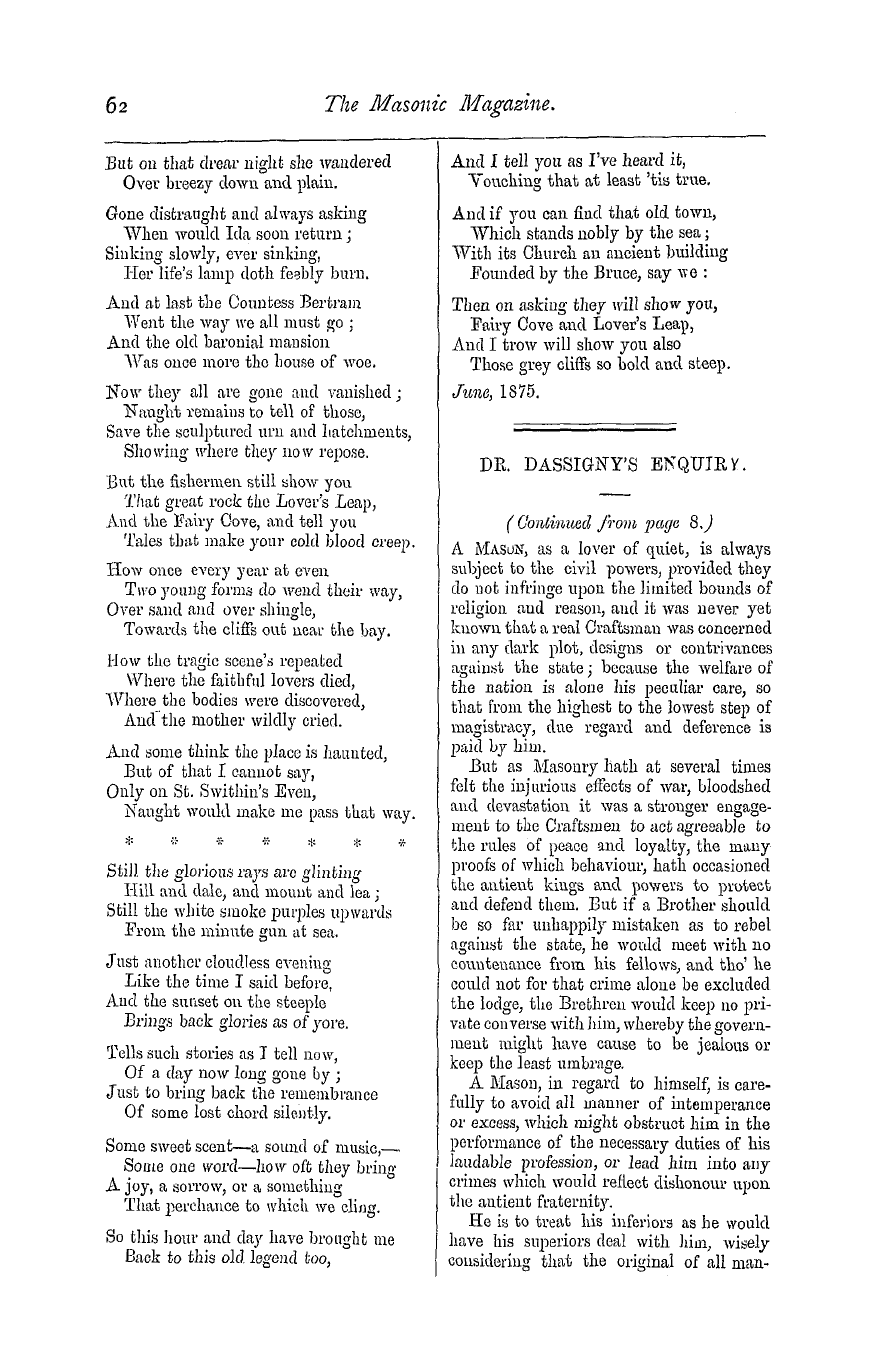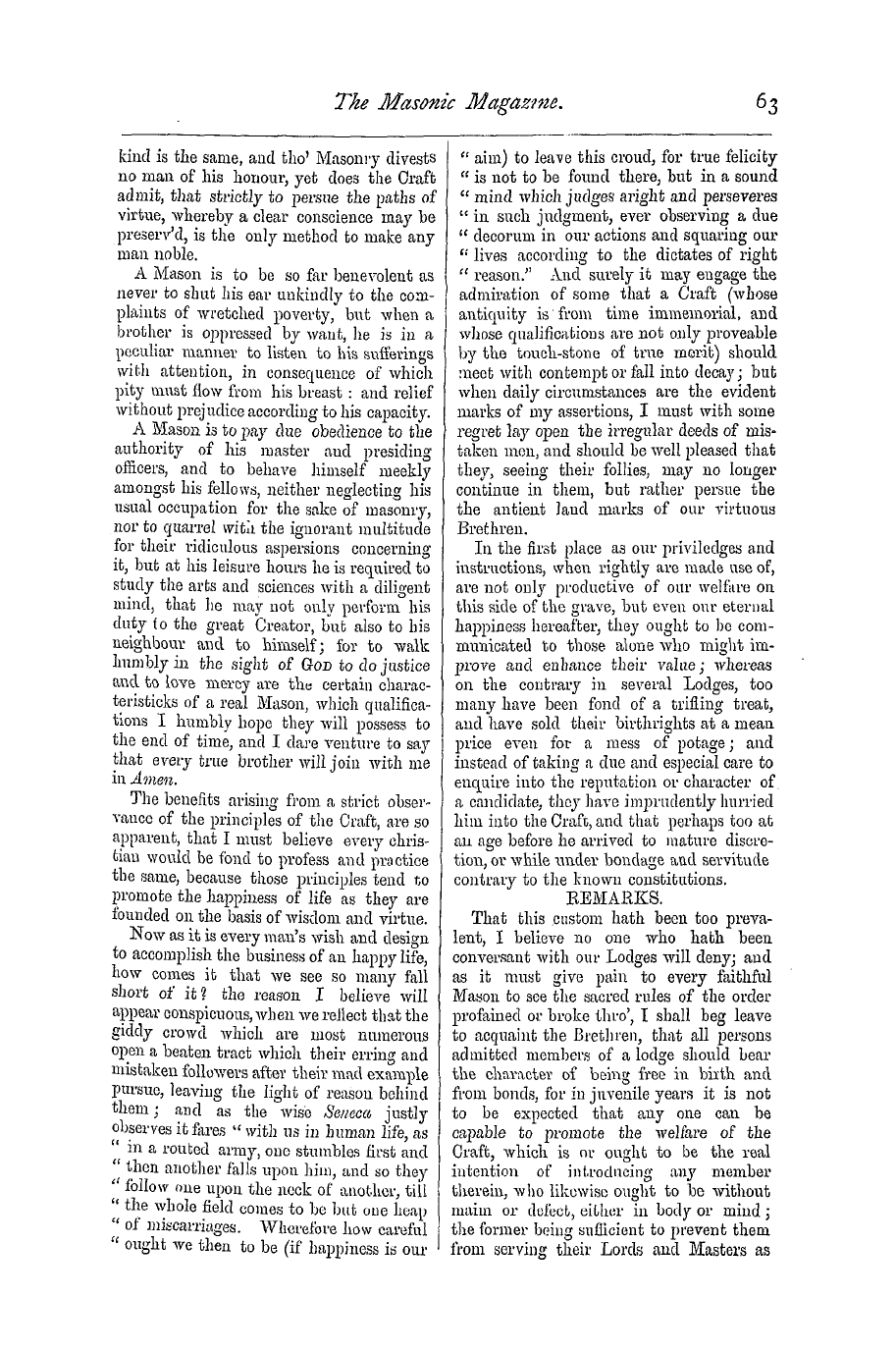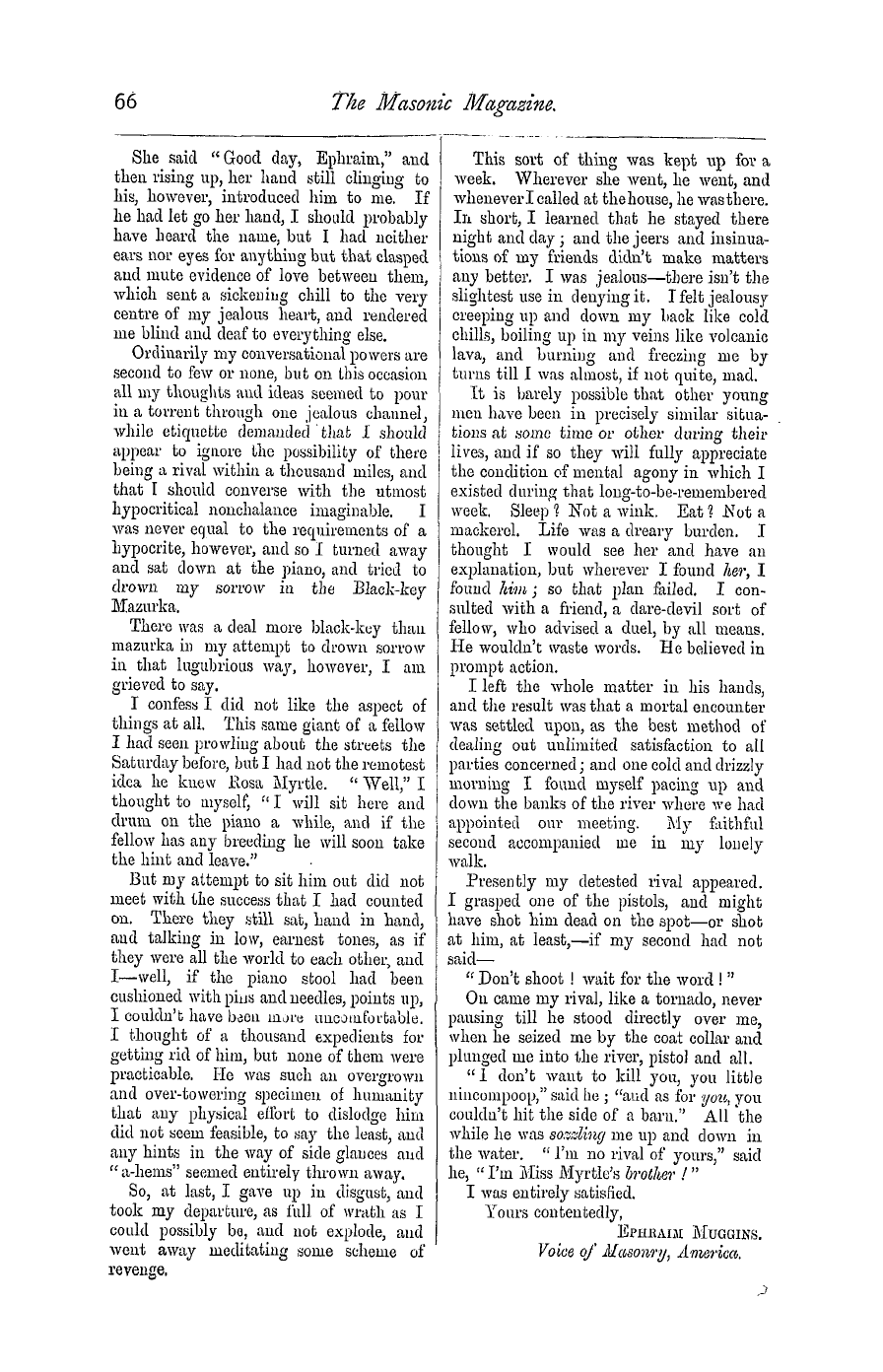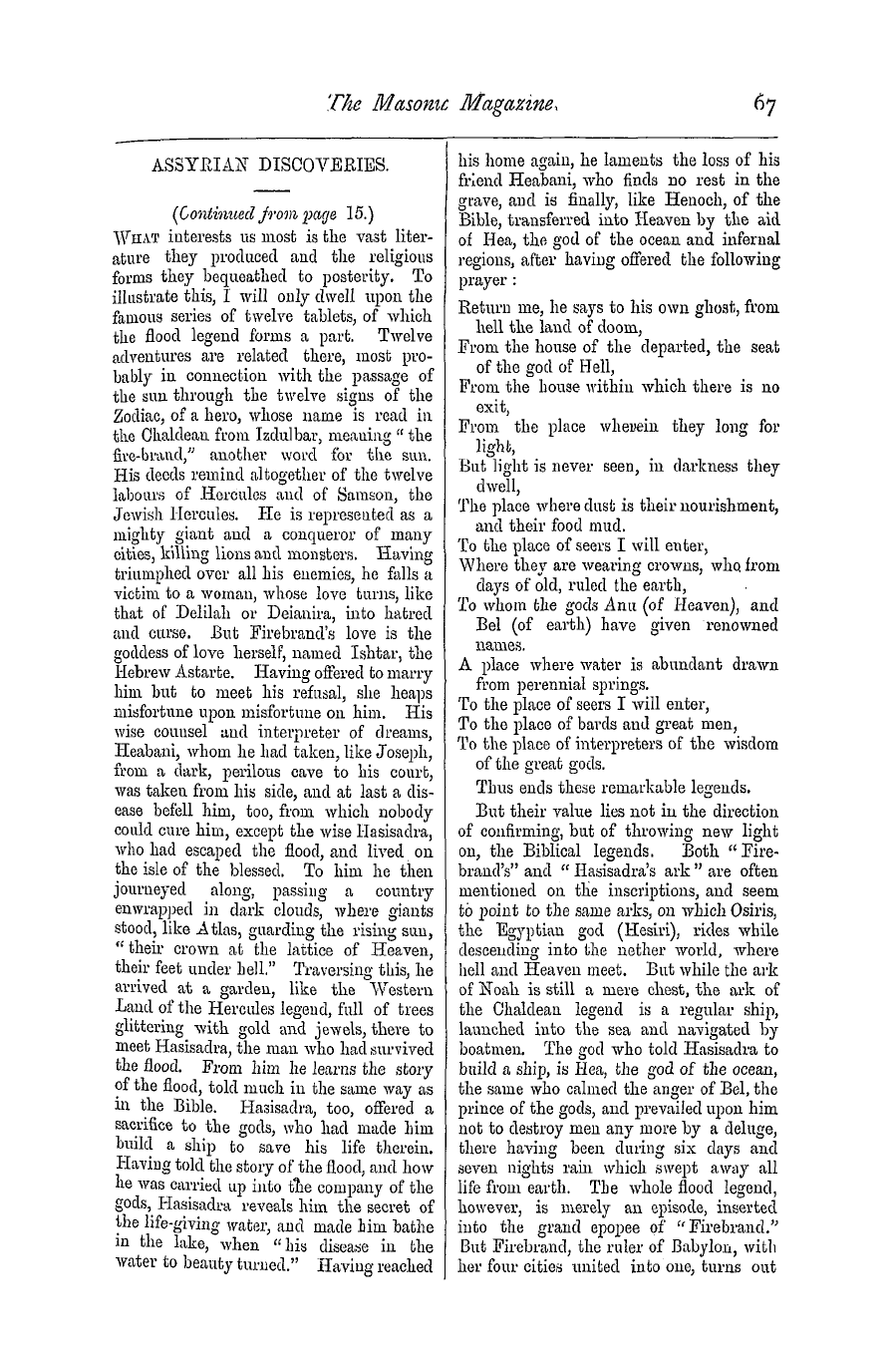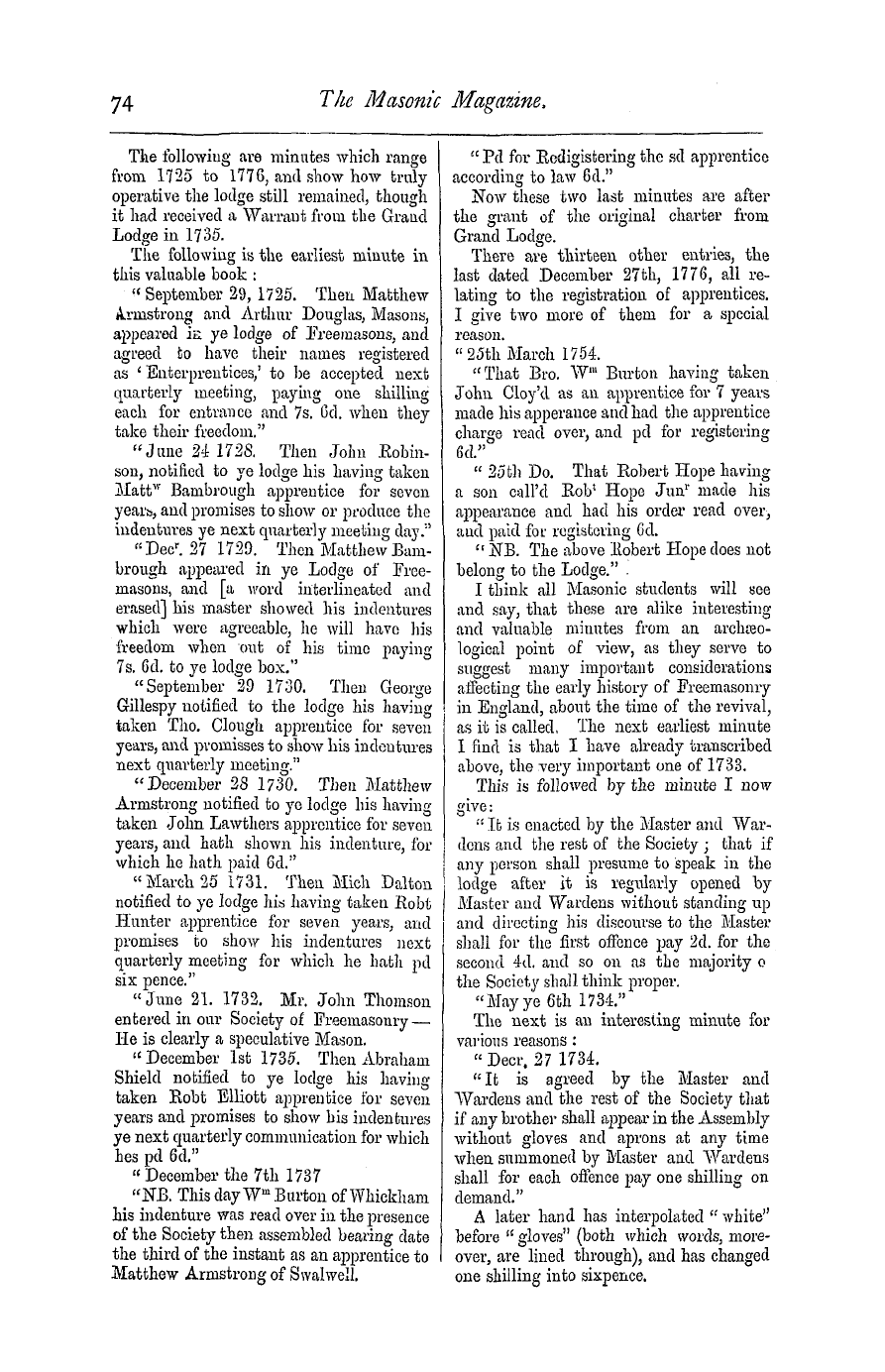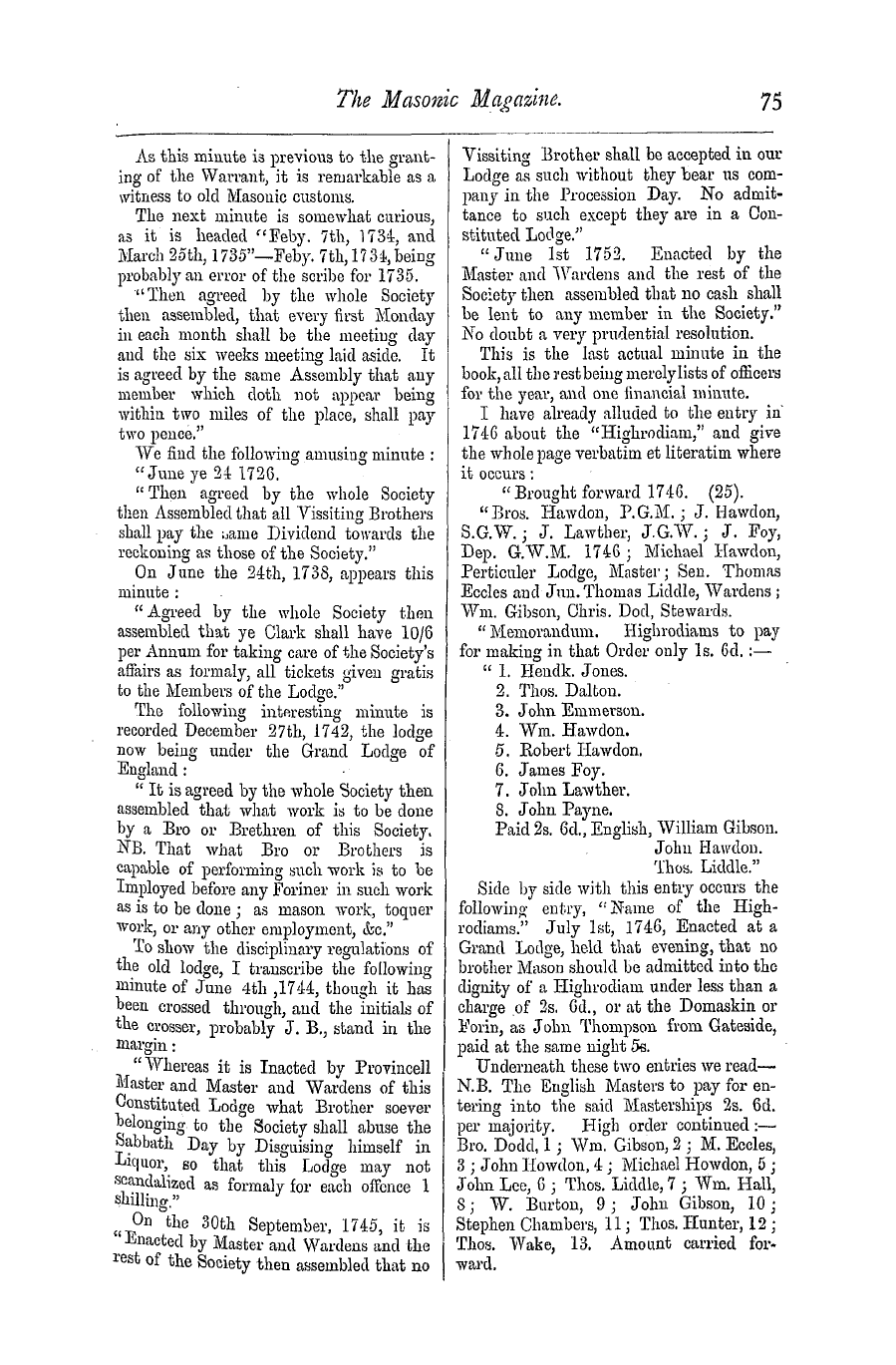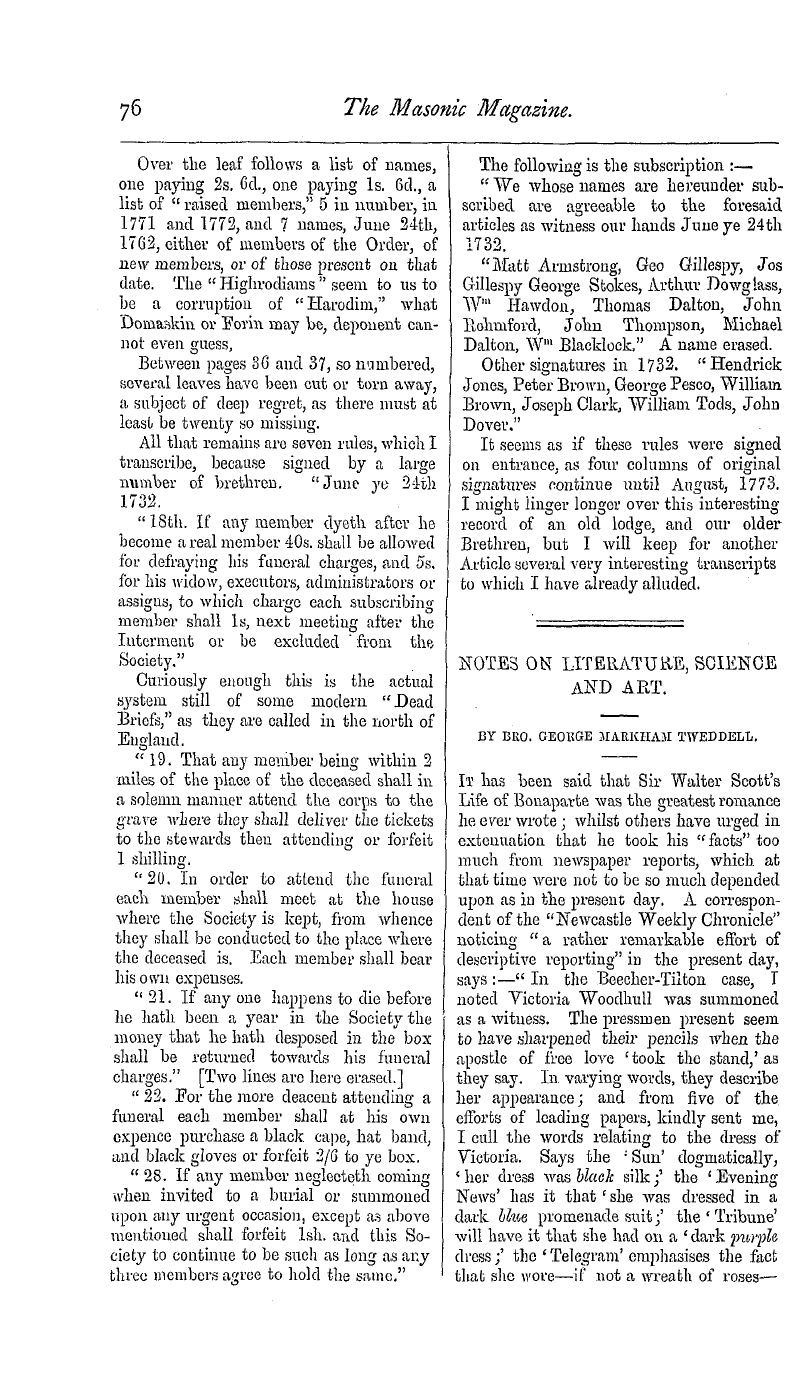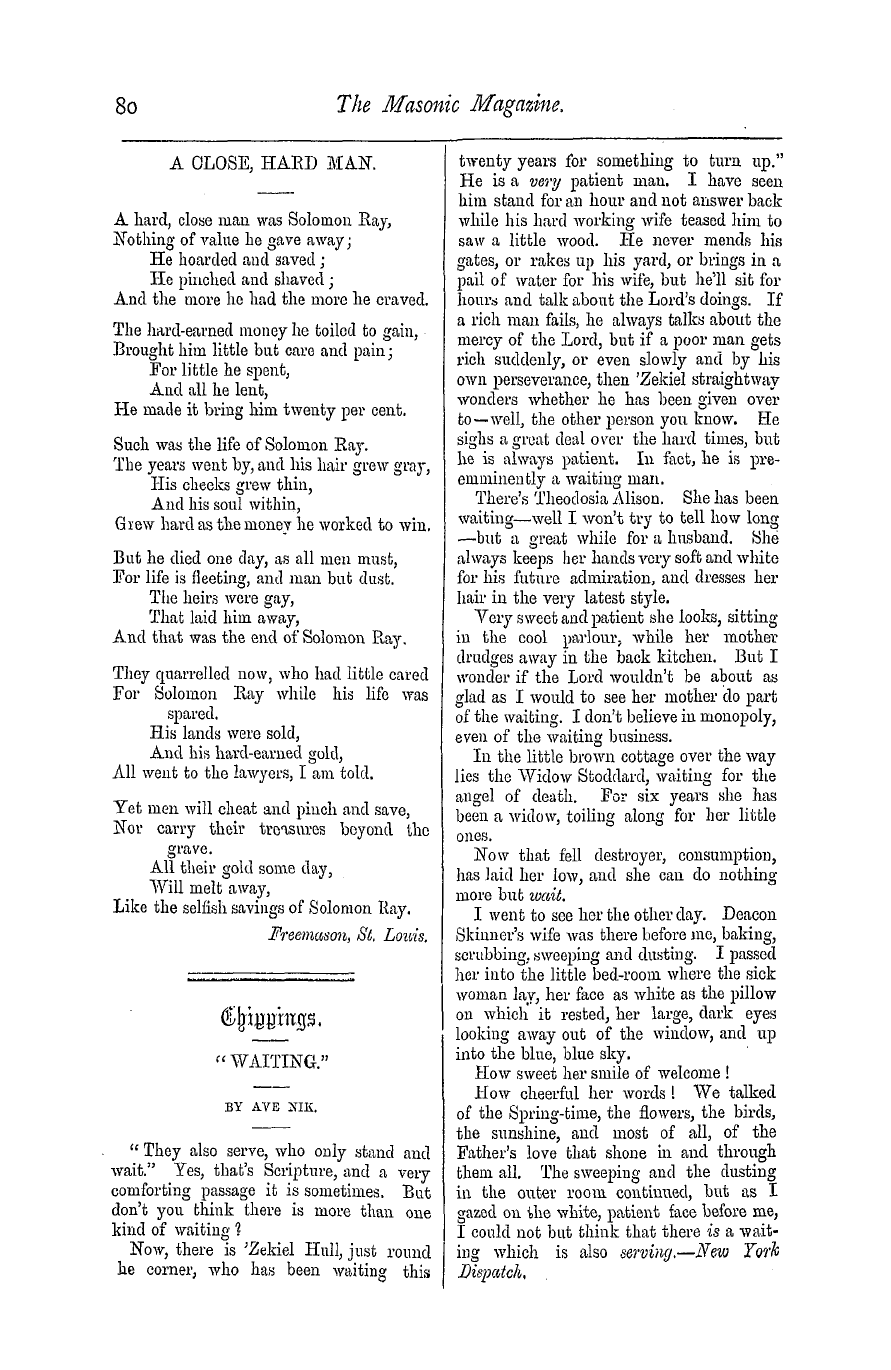-
Articles/Ads
Article THE "EDINBURGH REVIEW" AND FREEMASONRY. ← Page 2 of 3 →
Note: This text has been automatically extracted via Optical Character Recognition (OCR) software.
The "Edinburgh Review" And Freemasonry.
furnish a very remarkable comment upon the Vitruvian precepts of combining astrological and architectural science . The signs of the Zodiac , the seals and configurations of the planets , the phases of tbe moon , are found in the recesses of the portal , —in the gem-like orb—high in the
vaulted roof—in the pavement of the choir . ... If any mysterious doctrine is , or has been at any period really taught in tbe Masonic Lodge , it may , as in the case of the Templars , be deemed an extraneous engraftment ; for Avhich the
practice of secret initiation , anciently common to many other similar bodies , prepared the Avay . Yet it is remarkable that the myihos of the disciple slain by the jealousy of his master , Avhose skill he rivalled or excelled , and presented as the
basis of modern Masonic system , retains a local habitation at York and at Lincoln , at Itosslyn and at Rouen , whilst the window or column Avhich tradition assigns as the cause of the rivalry , displays tbe pentalpha , or exhibits the adornment by which they are rendered the acknowledged tokens of the fraternity . " . . .
"In England , the lodges , at an early period , were proscribed by the legislature . ¦ . . Under these circumstances , instead of being surprised at the deficiency of evidence , it is , in truth , remarkable that such distinct and satisfactory evidence of the labours of the Freemasons should have been preserved . . . . As to our own
country , m despite of the statute , the abbott , nay , the sovereign retained Freemasons as the architects of their proudest structures . " * After disproving the assertion that Gothic architecture was due to the Freemasonsor in other Avordstheir offspring
, , as a congregated body by working in concert , and clearly stating the impossibility of any such united action any more than for a scientific society to discover gravitation , a literary academy to compose a ' Paradise Lost , " or an academy of the
fine arts to have painted a "Transfiguration , " the writer observes that the fraternity of Freemasons simply performed the useful and important duties expected from such organizations , viz ., " They assisted in the spread of knowledge , and in besto * , ving
upon talent the countenance and protection of station and established poAver . " Finally , the author of the interesting article ( Sir Francis Palgrave , apparently a non-mason ) remarks , "Much more might be said on the subject of Masonry . The
connection between the operative Masons , and those Avbom , Avithout disrespect , we must term a convivial society of good felloAvs—who , in the reign of Queen Anne , met at the ' Goose and Gridiron , in St . Paul his Churchyard' —appears to have been finally dissolved about the beginning of the eighteenth century . "
The note beloAv the foregoing is important , and is to the following effect : " The theoretical ancl mystic , for we dare not say , ancient Freemasons , separated from the Worshipful Company of Masons and Citizens of London , about the period above
mentioned . It appears from an inventory of the contents of tbe chest of the London Company that not very long since it contained , ' A book wrote on parchment , and bound or sticht in parchment , containing an 113 annals of the antiquity , rise , and
progress of the art and mystery of Masonry . ' But this document is now not to be found . " Having presented the foregoing extracts from an article in the "Edinburgh RevieAv , " we should like to draw attention to a few points which appear to us important .
1 . Ihe MS . mentioned in the note , having passed through several hands , is nowin thepossessionof Bro . tbe Rev . A . F . A . Woodford , and as we have explained in our " Old Charges of British freemasons , ' it is almost word for word , Avith the celebrated "Cooke ' s MS . " ( British Museum )
pub-, lished by Bro , Spencer , London . 2 . Tbe second MS . alluded to , hoAvever , is not so easily traced , in fact so far is un'knoAvn . It is just possible that one of the existing MSS . may prove to be this very document ; and Avethereforehope to
, , have the assistance of Masonic students in seeking either to discover the original MS . or find it amongst those still preserved in our libraries . The fact of such D 2
Note: This text has been automatically extracted via Optical Character Recognition (OCR) software.
The "Edinburgh Review" And Freemasonry.
furnish a very remarkable comment upon the Vitruvian precepts of combining astrological and architectural science . The signs of the Zodiac , the seals and configurations of the planets , the phases of tbe moon , are found in the recesses of the portal , —in the gem-like orb—high in the
vaulted roof—in the pavement of the choir . ... If any mysterious doctrine is , or has been at any period really taught in tbe Masonic Lodge , it may , as in the case of the Templars , be deemed an extraneous engraftment ; for Avhich the
practice of secret initiation , anciently common to many other similar bodies , prepared the Avay . Yet it is remarkable that the myihos of the disciple slain by the jealousy of his master , Avhose skill he rivalled or excelled , and presented as the
basis of modern Masonic system , retains a local habitation at York and at Lincoln , at Itosslyn and at Rouen , whilst the window or column Avhich tradition assigns as the cause of the rivalry , displays tbe pentalpha , or exhibits the adornment by which they are rendered the acknowledged tokens of the fraternity . " . . .
"In England , the lodges , at an early period , were proscribed by the legislature . ¦ . . Under these circumstances , instead of being surprised at the deficiency of evidence , it is , in truth , remarkable that such distinct and satisfactory evidence of the labours of the Freemasons should have been preserved . . . . As to our own
country , m despite of the statute , the abbott , nay , the sovereign retained Freemasons as the architects of their proudest structures . " * After disproving the assertion that Gothic architecture was due to the Freemasonsor in other Avordstheir offspring
, , as a congregated body by working in concert , and clearly stating the impossibility of any such united action any more than for a scientific society to discover gravitation , a literary academy to compose a ' Paradise Lost , " or an academy of the
fine arts to have painted a "Transfiguration , " the writer observes that the fraternity of Freemasons simply performed the useful and important duties expected from such organizations , viz ., " They assisted in the spread of knowledge , and in besto * , ving
upon talent the countenance and protection of station and established poAver . " Finally , the author of the interesting article ( Sir Francis Palgrave , apparently a non-mason ) remarks , "Much more might be said on the subject of Masonry . The
connection between the operative Masons , and those Avbom , Avithout disrespect , we must term a convivial society of good felloAvs—who , in the reign of Queen Anne , met at the ' Goose and Gridiron , in St . Paul his Churchyard' —appears to have been finally dissolved about the beginning of the eighteenth century . "
The note beloAv the foregoing is important , and is to the following effect : " The theoretical ancl mystic , for we dare not say , ancient Freemasons , separated from the Worshipful Company of Masons and Citizens of London , about the period above
mentioned . It appears from an inventory of the contents of tbe chest of the London Company that not very long since it contained , ' A book wrote on parchment , and bound or sticht in parchment , containing an 113 annals of the antiquity , rise , and
progress of the art and mystery of Masonry . ' But this document is now not to be found . " Having presented the foregoing extracts from an article in the "Edinburgh RevieAv , " we should like to draw attention to a few points which appear to us important .
1 . Ihe MS . mentioned in the note , having passed through several hands , is nowin thepossessionof Bro . tbe Rev . A . F . A . Woodford , and as we have explained in our " Old Charges of British freemasons , ' it is almost word for word , Avith the celebrated "Cooke ' s MS . " ( British Museum )
pub-, lished by Bro , Spencer , London . 2 . Tbe second MS . alluded to , hoAvever , is not so easily traced , in fact so far is un'knoAvn . It is just possible that one of the existing MSS . may prove to be this very document ; and Avethereforehope to
, , have the assistance of Masonic students in seeking either to discover the original MS . or find it amongst those still preserved in our libraries . The fact of such D 2























